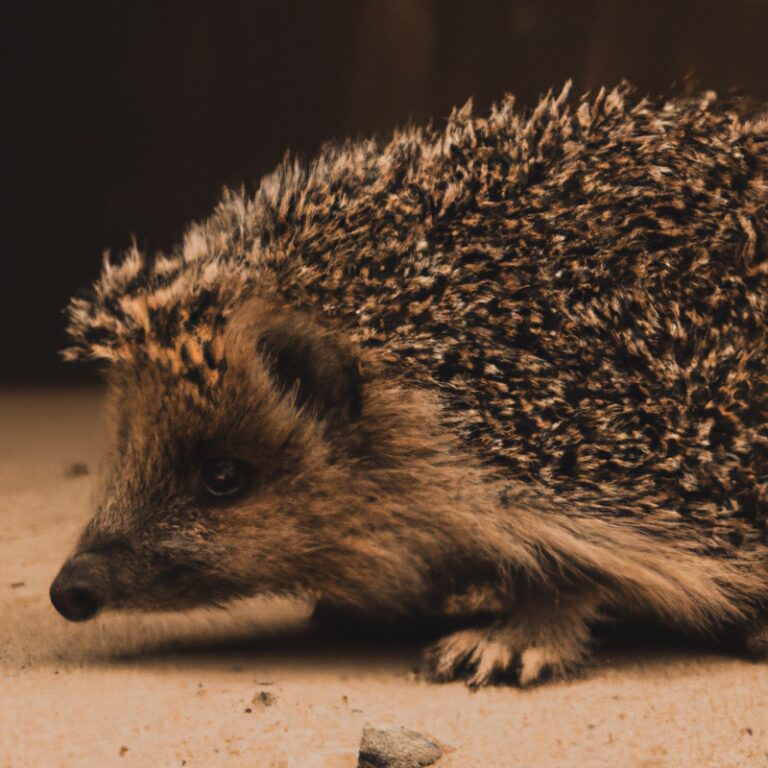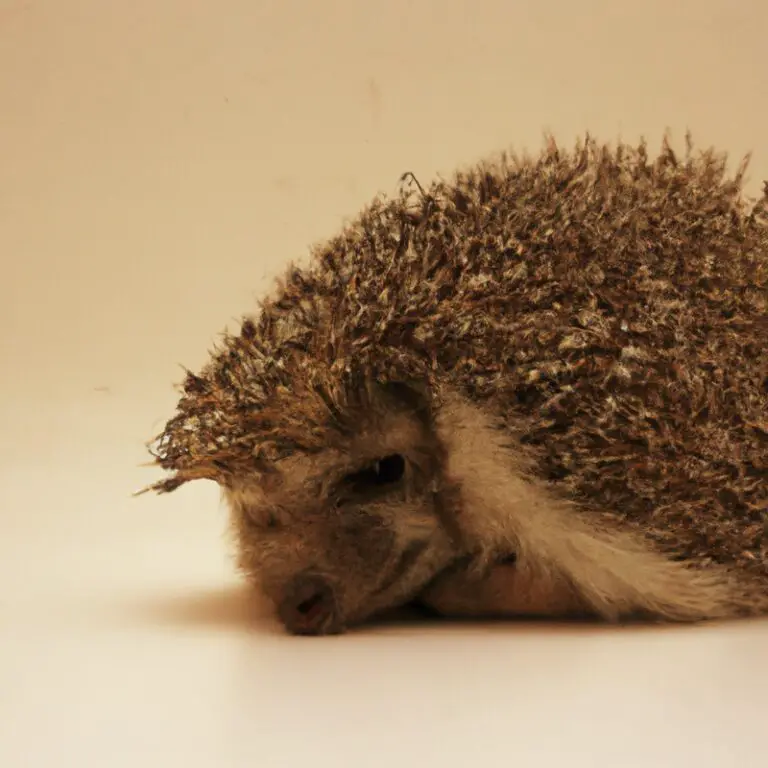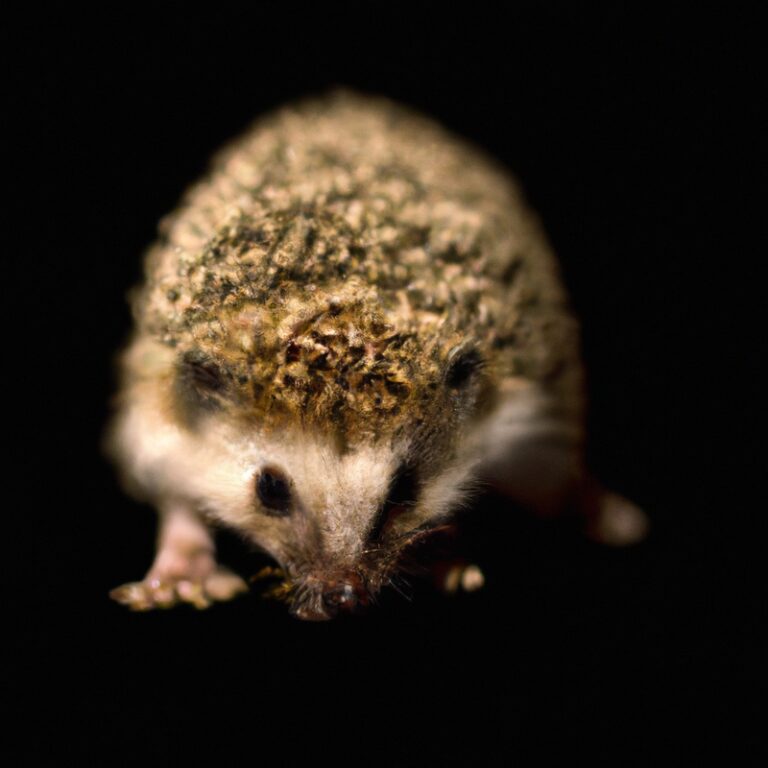How To Discourage Hedgehog Predators?
Key Takeaways:
- Creating a hedgehog-friendly garden with dense vegetation and small entry points can help discourage predators.
- Installing secure fencing around the garden can prevent larger predators from accessing hedgehog habitats.
- Providing supplementary feeding stations for hedgehogs can reduce their need to venture into more vulnerable areas.
- Minimizing the use of pesticides and harmful chemicals can help maintain a healthy ecosystem for hedgehogs and deter their predators.
Are you a fan of these adorable spiky creatures called hedgehogs?
Well, if you are, then I’m sure you’d want to create a safe haven for them in your garden or neighborhood.
As cute as they are, hedgehogs face a range of predators that can endanger their populations.
That’s why it’s crucial for us to understand the importance of discouraging these predators and taking necessary measures to protect our prickly friends.
In this article, we’ll dive into the world of hedgehog predators, explore ways to create a safe environment, implement predator deterrents, and promote hedgehog awareness and conservation efforts.
So, let’s get started on this journey to safeguard our hedgehog buddies!
| Predator | Methods to Discourage |
|---|---|
| Cats | 1. Keep cat food indoors 2. Install a motion-activated sprinkler 3. Trim back dense vegetation |
| Foxes | 1. Secure the bottom of fences to prevent digging 2. Remove potential food sources 3. Install motion sensor lights |
| Badgers | 1. Install sturdy fencing dug deep into the ground 2. Use strong-smelling deterrents 3. Avoid leaving food or garbage exposed |
| Birds of Prey | 1. Install bird netting over hedges or gardens 2. Create overhead cover for smaller animals 3. Use bird deterrent devices (e.g., scarecrows, shiny objects) |
| Dogs | 1. Supervise dogs when outside 2. Keep them in a secure yard or on a leash 3. Use deterrent sprays or noise makers if necessary |
Understanding the Importance of Discouraging Hedgehog Predators
Protecting hedgehogs from predators is essential for their survival and well-being.
Predators can have a significant impact on hedgehog populations and their ability to thrive.
Why it is crucial to protect hedgehogs from predators
Protecting hedgehogs from predators is crucial because it helps maintain a balanced ecosystem.
Hedgehogs play a vital role in controlling pest populations such as slugs and snails.
If hedgehogs are preyed upon by predators, their numbers decrease, which can lead to an increase in pests that damage gardens and crops.
By protecting hedgehogs from predators, we can help ensure the ecological stability and health of our surroundings.
The impact of predators on hedgehog populations
Predators have a significant impact on hedgehog populations.
They pose a threat to hedgehogs by preying on them, which can lead to a decline in their numbers.
Common hedgehog predators include foxes, badgers, and domestic dogs and cats.
These predators can target hedgehog nests, eggs, and even adult hedgehogs.
The presence of predators can cause hedgehogs to avoid certain areas or disrupt their natural behaviors, making it harder for them to find food and mates.
Protecting hedgehogs from predators is crucial for their survival.
Identifying Common Hedgehog Predators
Common hedgehog predators include animals such as foxes, badgers, and domestic dogs or cats.
Additionally, hedgehogs face threats from human-related activities such as habitat destruction and accidental injury.
Natural predators of hedgehogs
Hedgehogs have a few natural predators in their habitat.
These predators include foxes, badgers, stoats, and certain birds of prey like owls.
These animals are known to hunt and prey on hedgehogs, so it’s important to be aware of their presence.
Keeping your garden or yard free of hiding spots and providing a secure hedgehog house can help protect them from these predators.
Human-related predators of hedgehogs
There are several human-related predators of hedgehogs. Some of the common ones include:
- Domestic pets: Dogs and cats are known to prey on hedgehogs if they come across them. It’s important to keep an eye on your pets when they are outside to prevent any harm to hedgehogs.
- Vehicles: Hedgehogs can be run over by cars if they are trying to cross roads at night. Be cautious when driving in areas where hedgehogs are known to roam and try to avoid hitting them.
- Garden tools and machinery: Hedgehogs can get injured or killed by accidental encounters with garden tools, such as lawn mowers, strimmers, or garden forks. Always check your garden before using any machinery and make sure hedgehogs are not hiding in bushes or under piles of leaves.
- Chemicals: Pesticides and other toxic substances used in gardens can be harmful to hedgehogs if they consume them accidentally. Try to use organic and wildlife-friendly alternatives to keep your garden free from pests without endangering hedgehogs.
By being aware of these human-related predators and taking precautions, you can help protect hedgehogs and create a safer environment for them to thrive.

Creating a Safe Environment for Hedgehogs
To create a safe environment for hedgehogs, focus on hedgehog-proofing your garden and providing secure shelter for them.
Hedgehog-proofing your garden
To make your garden safe for hedgehogs, here are a few tips:
- Create access points: Ensure there are gaps or holes in fences, walls, and hedges to let hedgehogs enter and exit freely.
- Remove hazards: Clear away any wire fencing, netting, or other objects that hedgehogs could become trapped in.
- Provide shelter: Leave some areas of your garden wild with piles of logs, leaf litter, or a hedgehog house to give them a safe place to rest and hibernate.
- Avoid pesticides: Minimize the use of chemicals in your garden, as they can harm hedgehogs. Opt for natural pest control methods instead.
- Check before gardening: Before starting any gardening activities, check for hedgehogs in areas such as compost heaps or under shrubs to avoid accidentally harming them.
By taking these simple steps, you’ll be creating a hedgehog-friendly environment that helps to ensure their safety in your garden.
Providing secure shelter for hedgehogs
Creating a secure shelter is essential for hedgehogs. Here’s what you can do:
- Provide a hedgehog house: Place a specially designed hedgehog house in a quiet, undisturbed area of your garden. Make sure it is well-insulated and has a small entrance to keep predators out.
- Avoid using chemicals: Keep your garden free of pesticides and herbicides. These can harm hedgehogs and reduce their food sources.
- Natural cover: Keep areas of your garden wild and overgrown, with piles of leaves and logs. This will provide additional hiding spots for hedgehogs.
- Secure fencing: Ensure your garden is hedgehog-friendly by installing suitable fencing or creating hedgehog-friendly gaps in existing fencing. This will prevent hedgehogs from accessing dangerous areas.
- Water supply: Hedgehogs need a fresh water source. Place a shallow dish of water in your garden and ensure it is regularly topped up.
By providing a secure shelter, you will create a safe haven for hedgehogs and help protect them from predators.

Implementing Predator Deterrents
Using physical barriers and effective lighting are effective ways to deter predators and protect hedgehogs.
Using physical barriers to deter predators
Using physical barriers is an effective way to deter predators from harming hedgehogs. Some examples of physical barriers that can be used include:
- Fences: Install sturdy fences around your garden to prevent predators from gaining easy access. Ensure that the fence is buried below ground to prevent digging.
- Hedgehog Houses: Provide hedgehogs with a safe and secure place to hide and rest. Hedgehog houses should have a small entrance that is only accessible to hedgehogs, keeping predators out.
- Netting: Cover vulnerable areas such as ponds or compost heaps with netting to prevent predators from reaching hedgehogs.
Remember, the key is to create a physical barrier that makes it difficult for predators to reach hedgehogs, keeping them safe in their natural habitat.
Installing effective lighting to discourage predators
Installing effective lighting is an important step to discourage predators from targeting hedgehogs.
Bright lights can create an intimidating environment for potential predators, making them think twice before approaching.
Place the lights strategically around hedgehog habitats, such as gardens, to ensure maximum coverage.
Motion sensor lights are also effective in surprising and scaring off predators.
Regularly check and maintain the lighting system to ensure it continues to deter predators effectively.
Encouraging a Hedgehog-Friendly Neighborhood
Creating a supportive environment for hedgehogs in your neighborhood.
Educating neighbors about hedgehog conservation
To educate your neighbors about hedgehog conservation, start by organizing a neighborhood meeting to discuss the importance of preserving hedgehogs. Share fascinating facts about hedgehogs and the role they play in the ecosystem.
Provide practical tips on how to create hedgehog-friendly habitats, such as leaving gaps in fences for them to roam freely.
Encourage neighbors to avoid using chemicals in their gardens that could harm these adorable creatures. Finally, distribute informative flyers or pamphlets to reinforce the message and create awareness.
Promoting responsible waste management in the community
Promoting responsible waste management in the community is essential for a clean and healthy environment. Here are a few ways you can encourage proper waste disposal:
- Educate the community about the importance of recycling and reducing waste. Spread awareness through workshops, social media campaigns, and informative posters.
- Provide convenient recycling bins and separate containers for different types of waste in public areas. This makes it easier for people to dispose of their garbage correctly.
- Encourage composting by providing compost bins or organizing composting workshops. This helps reduce organic waste and creates nutrient-rich soil.
- Collaborate with local businesses and organizations to implement sustainable waste management practices. Offer incentives for eco-friendly initiatives, such as reduced waste disposal fees or recognition for their efforts.
- Engage community members in cleanup drives and community events focused on waste management. This fosters a sense of ownership and responsibility towards the environment.
Remember, responsible waste management starts with individual efforts. By working together, we can create a cleaner and more sustainable community for everyone.
Promoting Hedgehog Awareness and Conservation Efforts
Create awareness and support conservation campaigns to protect hedgehogs.
Participating in local hedgehog preservation initiatives
One great way to support hedgehog preservation is by getting involved in local initiatives.
Here are a few simple steps you can take to participate:
- Connect with local organizations: Find and join groups or associations that focus on hedgehog conservation in your area. They often organize events, provide resources, and offer opportunities for you to contribute.
- Volunteer your time: Offer to help with tasks such as habitat maintenance, monitoring, or education programs. Your involvement can make a significant difference.
- Create hedgehog-friendly spaces: Transform your garden or outdoor spaces into hedgehog havens by providing food, water, and shelter. Local initiatives may have specific guidelines on how to create hedgehog-friendly environments.
- Spread the word: Raise awareness about hedgehog preservation among your friends, family, and broader community. Share information, tips, and stories via social media or community platforms.
By participating in local hedgehog preservation initiatives, you can contribute to the well-being and conservation of these adorable little creatures.
Supporting hedgehog rescue and rehabilitation centers
Supporting hedgehog rescue and rehabilitation centers is essential for the conservation of these adorable creatures.
One way you can help is by making a donation to these centers.
Your contribution can go towards providing food, medical supplies, and veterinary care for injured or sick hedgehogs.
Another way to show support is by volunteering your time.
Many rescue centers rely on the help of dedicated individuals to clean enclosures, assist with feeding, and provide socialization for the hedgehogs.
By supporting these centers, you are playing a vital role in safeguarding the future of hedgehogs.
Frequently Asked Questions (FAQs)
How can I discourage cats from preying on hedgehogs?
To discourage cats from preying on hedgehogs, there are a few simple steps you can take.
Firstly, create a safe haven for hedgehogs by providing them with a hedgehog house or a sheltered area in your garden.
This will protect them from being easily accessible to cats.
Secondly, avoid leaving out food that may attract both cats and hedgehogs.
Instead, feed hedgehogs separately and keep cat food indoors.
Lastly, consider installing obstacles such as prickly plants or cat deterrents near hedgehog feeding areas.
These measures can help reduce the predation risk for hedgehogs.
Are hedgehogs affected by birds of prey?
Birds of prey, such as owls and hawks, can indeed pose a threat to hedgehogs.
These predators have sharp talons and beaks that can easily catch and injure a hedgehog.
While hedgehogs have their own ways of defending themselves, such as curling into a spiky ball, they may still be vulnerable to attacks from birds of prey, especially if they are caught off guard or cannot find suitable cover.
Providing safe hiding spots and limiting hedgehog exposure during nighttime can help reduce the risk of predation by birds of prey.
Can hedgehogs defend themselves against predators?
Hedgehogs do have some defense mechanisms to protect themselves against predators. They have sharp spines all over their back, which they can raise to form a spiky barrier.
This can deter many predators from attacking.
Hedgehogs can also roll into a tight ball, with their spines facing outward, to further protect themselves. Additionally, they have a good sense of hearing and smell, which helps them detect predators and seek refuge.
However, hedgehogs are not able to defend themselves against all predators, especially larger ones like dogs or foxes.
Final Verdict
Protecting hedgehogs from predators is paramount to their survival. Natural and human-related predators pose significant threats to hedgehog populations, leading to declines in numbers.
Creating a safe environment for hedgehogs involves hedgehog-proofing your garden and providing secure shelter.
Implementing predator deterrents such as physical barriers and effective lighting can help discourage predators. Encouraging a hedgehog-friendly neighborhood through education and responsible waste management is crucial.
Additionally, supporting hedgehog conservation initiatives and rescue centers further promotes their welfare.
By taking proactive measures, we can ensure the safety and preservation of these beloved creatures for future generations.







